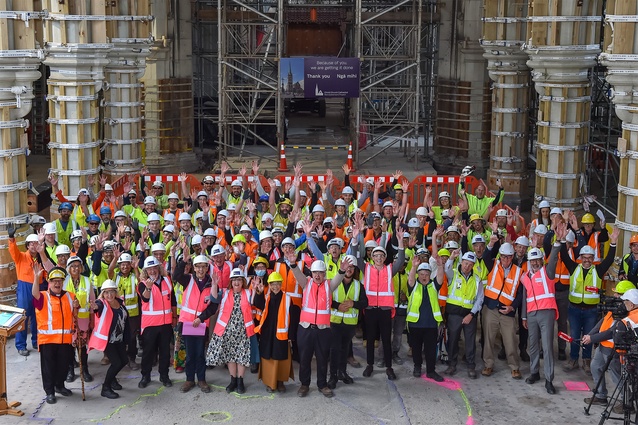Exclusive series: Inside Christ Church Cathedral, Part 2
In this instalment, Tim Holmes of Warren and Mahoney writes on a significant milestone and the next stage of the Christ Church Cathedral reinstatement project — the focus moving from stabilisation to strengthening.
We are excited to celebrate a significant milestone — the stabilisation stage of the project is complete and we are now able to get inside and begin to acquaint ourselves with the material and condition of what remains.
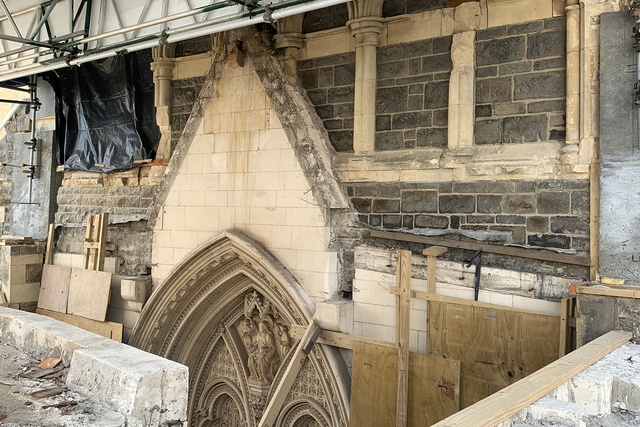
The final months of stabilisation works have seen sections of the building deconstructed where unstable, such as the blind arcade on the west wall above the entry porch.
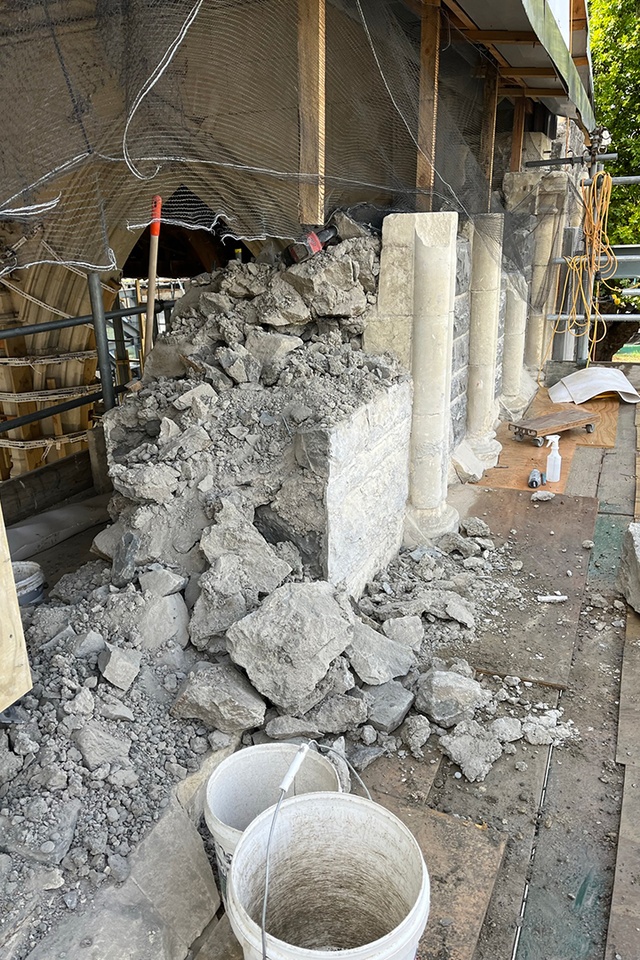
As well as being unstable, this section of the west wall will be strengthened with a reinforced concrete beam at the base of a steel frame that will support a reconstructed rose window.

Last month — with sign-off by the structural engineer Holmes — the building was deemed as above 34% strength of the New Building Code (NBS) upon completion of the stabilisation phase. This marked another incredible feat for the reinstatement team. The Cathedral is no longer considered earthquake-prone.
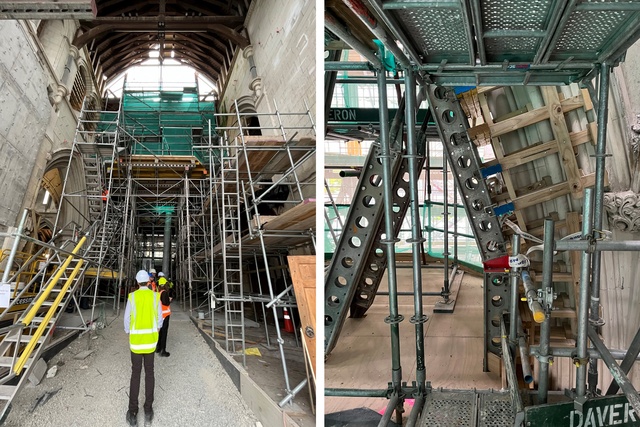
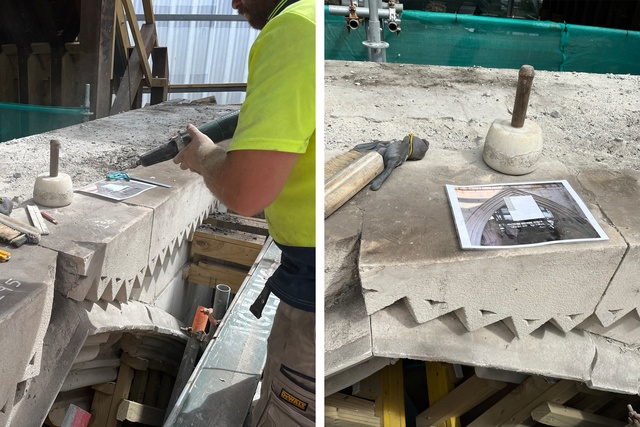
Now moving on to the strengthening phase, steel reinforced concrete panels will be added to the walls — the strengthened stonework then later re-clad with a mixture of original facing stones and new to replace damage. The original stones being removed for re-use, are carefully loaded onto pallets, which are then craned out and taken into storage.

After more than 2 ½ years, access to the Cathedral to carry out the strengthening and reinstatement work is now in line with that on a normal building site.
This means that contractors can begin the task of deconstructing, in order to place reinforced concrete and steel frames within the thickness of the existing walls.
The steel reinforcing will provide the strength required by the current code to ensure life safety in large earthquakes.
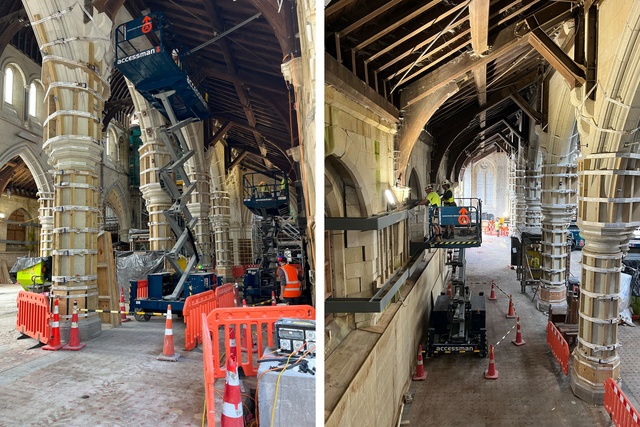
Further down the aisle, the nave loose stone is being pinned or strapped to prevent it from falling in the event of another earthquake.
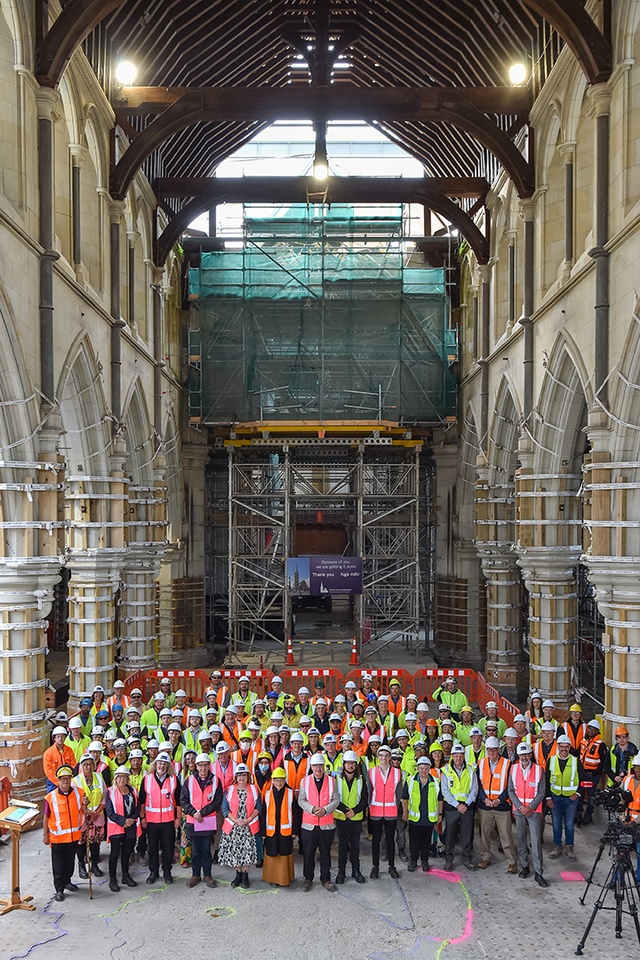
The milestone was celebrated with a congregation of those involved in the project, gathering in the nave for speeches led by Bishop Peter Carrell, followed by Minister Megan Woods and CCRL Board Chair Mark Stewart.
For many in the design team, this was the first time they had entered the building since before the earthquakes over 12 years ago. And, for the many who have relocated to Christchurch since, for the first time ever.
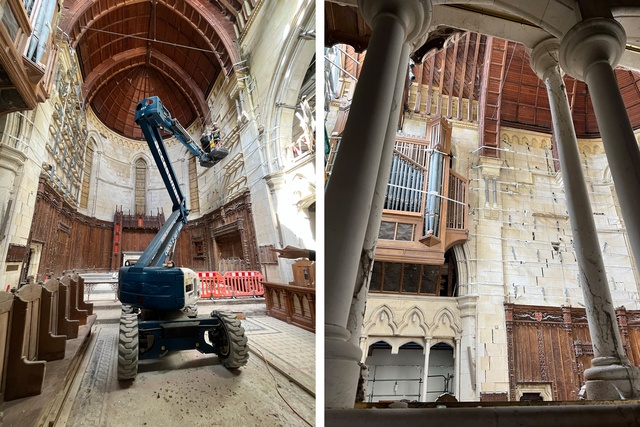

Being able to enter the building in relative safety, we can now begin to understand the detail, condition of materials and the way that they have been constructed first-hand.
To date, we have only been able to reference photos, drone footage and old drawings to gather the information we needed to design the works.
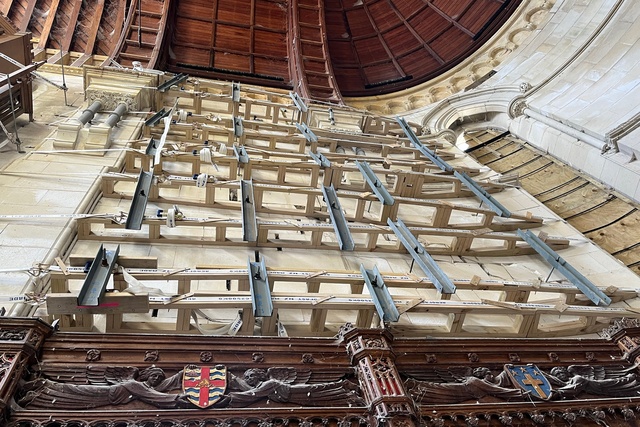
Many significant pieces of the Cathedral’s original decoration and fixed furnishing have been removed, packaged and placed securely in storage over recent months and I will look at these in detail over the coming years, as well as work to restore the damage and make them ready for when reinstatement begins.
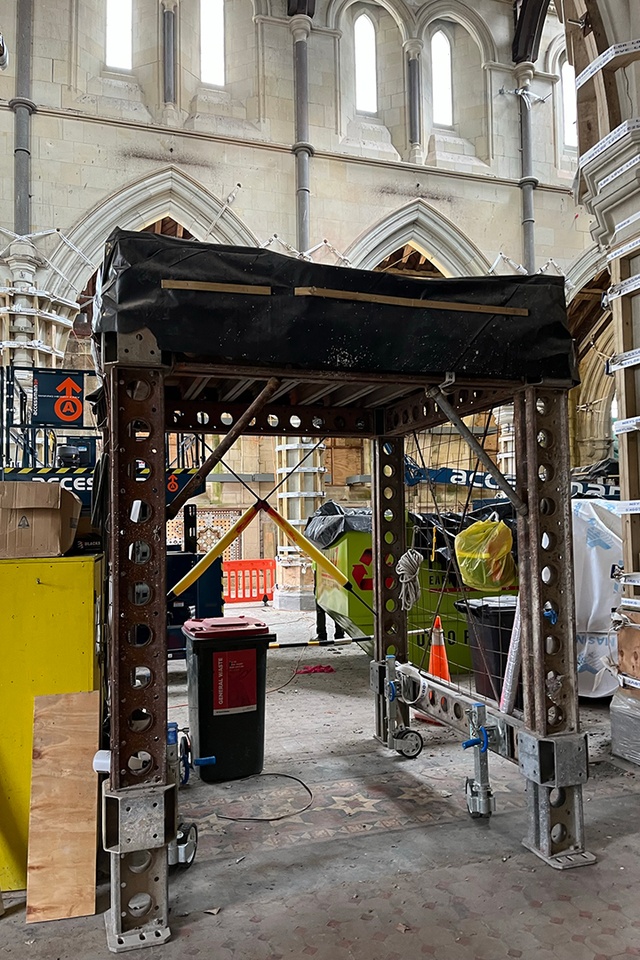
Pictured above and thankfully now redundant is one of the last collapse projection shelters used at the end of the stabilisation works.
For further news and updates on this project along with detailed information images and videos, head to Christ Church Cathedral Reinstatement Project‘s website.
Tim Holmes of Warren and Mahoney is project architect on the Christ Church Cathedral reinstatement project and National Heritage expert for the practice.

